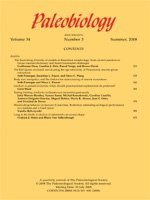Model calculations predict that pathways of alpha- and beta-diversity in diversifying ecosystems notably differ depending on the relative role of competition, predation, positive effects of species' interactions, and environmental parameters. Four scenarios are discussed, in which alpha- and beta-diversity are modeled as a function of increasing gamma-diversity. The graphic illustration of this approach is herein called α-β-γ plot, in which the x-axis indicates increasing diversification rather than absolute time. In purely environmentally controlled systems, beta-diversity maintains near-maximum values throughout the diversification interval, whereas mean alpha-diversity increases linearly, with a slope being reciprocal to beta-diversity. A second scenario is based on the assumption that increasing richness will have predominantly positive effects on the addition of further species; here, alpha- and beta-diversity increase simultaneously (though not necessarily at the same rates) and without reaching a predictable upper limit. In ecosystems that are characterized by low competition between species, mean alpha-diversity asymptotically approaches a saturation level, whereas the increase in beta-diversity accelerates until alpha-diversity stagnates, and then continues to rise linearly. If competition is high, addition of species first increases beta-diversity until no further habitat contraction is possible, followed by a period in which alpha-diversity increase through adaptive divergence becomes the principal drive of diversification. Because there is a continuous transition between the late stage of the low-competition model and the early stage of the high-competition scenario, both can be combined in a single model of diversity partitioning under the premise of a diversity-dependent increase of competition. This summary model predicts three phases of diversity accumulation: (1) a niche overlap phase, (2) a habitat contraction phase, and (3) a niche differentiation phase. The models herein discussed provide a potential tool to assess the question which factors primary controlled the diversification of life over geological times.
How to translate text using browser tools
17 January 2014
Diversification and diversity partitioning
Michael Hautmann
ACCESS THE FULL ARTICLE

Paleobiology
Vol. 40 • No. 2
Spring 2014
Vol. 40 • No. 2
Spring 2014




